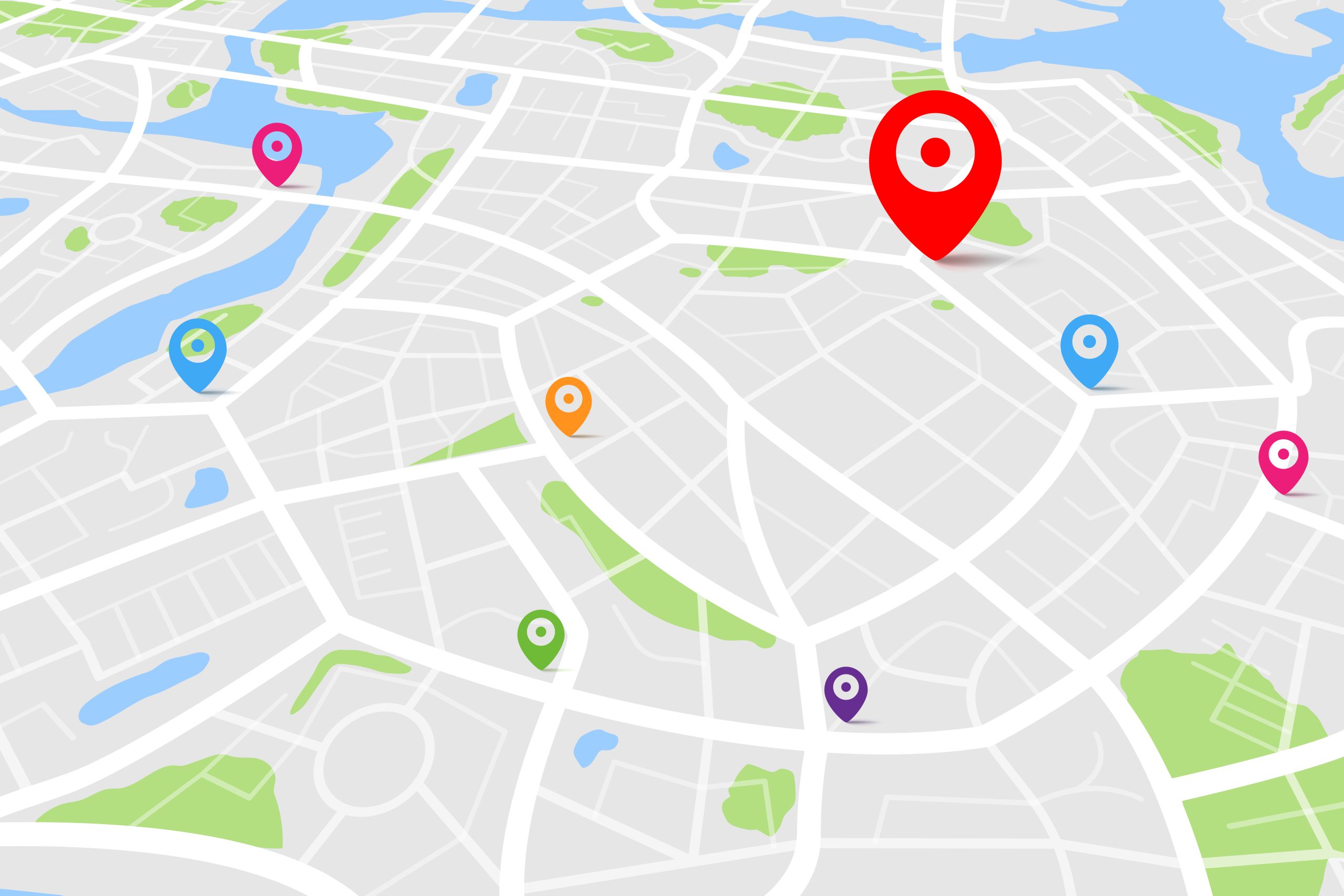
If you’re a local business owner, you know how important it is to have a strong online presence. And when it comes to dominating local searches, Google Maps is the key. But how can you ensure that your business ranks #1 in Google Maps? That’s where mastering local SEO strategies comes into play. In this article, we will uncover the secrets to unlocking success in Google Maps rankings.
From optimizing your Google My Business profile to getting positive reviews and building local citations, we will explore the most effective tactics to boost your visibility. We’ll also delve into the importance of NAP consistency, website optimization, and mobile responsiveness.
Make no mistake, ranking #1 in Google Maps can be a game-changer for your business. Just imagine the flood of local customers finding your establishment with a simple search. So, whether you’re a brick-and-mortar store or a service-based company, it’s time to level up your local SEO game. Get ready to dominate the rankings and attract a steady stream of highly targeted customers. Let’s get started!
Understanding local SEO and its importance
Local SEO focuses on optimizing your online presence to attract more customers from local searches. It’s all about making your business more visible to people in your area who are looking for the products or services you offer. With the rise of mobile searches, local SEO has become crucial for businesses of all sizes.
Local SEO is important because it helps you target customers who are ready to make a purchase. When someone searches for a service or product near them, they are usually in the final stages of the buying cycle. By ranking higher in Google Maps, you increase your chances of being discovered by these highly motivated customers.
The impact of local search on businesses
Local search has a significant impact on businesses, especially those with a physical location. According to Google, nearly 46% of all searches have local intent. This means that millions of people are actively searching for local businesses every day. If your business is not optimized for local search, you’re missing out on a huge opportunity to attract new customers.
In addition to driving more traffic to your website or physical store, local search can also lead to higher conversion rates. Studies have shown that people who conduct local searches are more likely to take action, such as calling or visiting a business. By optimizing your local SEO, you can increase your chances of converting these searchers into paying customers.
Key factors for ranking in Google Maps
To rank #1 in Google Maps, you need to focus on several key factors that influence your visibility. These factors include:
1. Optimizing your Google My Business listing
Your Google My Business (GMB) profile is the foundation of your Google Maps presence. To optimize your GMB listing, start by providing accurate and detailed information about your business. This includes your business name, address, phone number (NAP), website, hours of operation, and a description of your products or services.
Next, make sure to choose the right categories for your business. Selecting relevant categories will help Google understand what your business is about and increase your chances of appearing in relevant searches. Additionally, add high-quality photos of your business, products, or services to make your listing more appealing to potential customers.
Don’t forget to regularly update your GMB profile with any changes to your business information. This will ensure that your listing remains accurate and up-to-date, which is crucial for maintaining a strong online presence. By optimizing your GMB listing, you’ll increase your chances of ranking #1 in Google Maps and attracting more local customers.
2. NAP consistency and citation building
NAP stands for Name, Address, and Phone number. Consistency in your NAP information across all online platforms is crucial for local SEO. Inaccurate or inconsistent NAP information can confuse search engines and potential customers, leading to lower rankings.
NAP consistency refers to ensuring that your business name, address, and phone number are consistent across all online platforms. Inaccurate or inconsistent NAP information can confuse search engines and negatively impact your local SEO efforts. To achieve NAP consistency, start by conducting an audit of your online business listings.
Check popular directories, review sites, social media platforms, and other online directories where your business may be listed. Make sure to update any incorrect or outdated information with your accurate NAP details. Consistency is key, so double-check that your NAP is identical across all platforms.
In addition to NAP consistency, building local citations is another crucial aspect of local SEO. Citations are mentions of your business name, address, and phone number on other websites, even if there is no link back to your website. The more citations you have from authoritative and relevant websites, the better your chances of ranking higher in Google Maps.
To build local citations, start by listing your business on popular directories such as Yelp, Yellow Pages, and Bing Places. Additionally, consider reaching out to local business associations or chambers of commerce to get your business listed on their websites. Building a strong network of local citations will enhance your online visibility and increase your chances of ranking #1 in Google Maps.
Building local citations, which are online mentions of your business name, address, and phone number, is another important factor for ranking in Google Maps. Citations can be built through online directories, industry-specific websites, and local business associations. The more high-quality citations you have, the better your chances of ranking higher in local search results.
3. Local keyword research and on-page optimization
To rank #1 in Google Maps, you need to target the right keywords that local customers are searching for. Conducting local keyword research will help you identify the most relevant and high-traffic keywords for your business. Start by brainstorming a list of keywords that are related to your products or services and have a local intent.
Once you have your list of potential keywords, use keyword research tools like Google Keyword Planner or SEMrush to determine their search volume and competition level. Focus on keywords that have a decent search volume and low to medium competition.
After selecting your target keywords, it’s time to optimize your website’s on-page elements. This includes optimizing your page titles, meta descriptions, headers, and content with your target keywords. Make sure to include your city or region in these elements to signal to Google that you are targeting local searches.
Furthermore, ensure that your website’s URL structure is SEO-friendly and includes relevant keywords. For example, if you own a bakery in New York City, your URL structure for the bakery page could be www.yourwebsite.com/new-york-city-bakery. This will help search engines understand the context of your page and improve your chances of ranking #1 in Google Maps.
4. Building high-quality local backlinks
Backlinks are an essential ranking factor for both organic search results and Google Maps. However, when it comes to local SEO, it’s crucial to focus on building high-quality local backlinks. Local backlinks are links from other websites in your geographical area that point back to your website.
To build local backlinks, start by reaching out to local bloggers, influencers, or businesses that are relevant to your industry. Offer them valuable content or collaborate on a local event or initiative. This can lead to them mentioning or linking back to your website. Additionally, consider sponsoring local events or charities and ask for a mention or backlink on their websites.
Another effective strategy for building local backlinks is to leverage your relationships with local business partners or suppliers. Ask them to include a link to your website on their partner page or resource section. Building a network of high-quality local backlinks will not only improve your Google Maps ranking but also drive targeted traffic to your website.
5. Encouraging positive online reviews
Online reviews are a powerful trust signal for both potential customers and search engines. Positive reviews can significantly impact your Google Maps ranking and influence the decision-making process of potential customers. To encourage positive online reviews, start by providing excellent products or services and delivering exceptional customer experiences.
Make it easy for customers to leave reviews by creating a review generation strategy. This can include sending follow-up emails after a purchase or service, asking for feedback, and providing links to review platforms like Google, Yelp, or Facebook. Additionally, consider offering incentives or rewards for customers who leave reviews, such as discounts or exclusive offers.
It’s important to note that you should never incentivize or manipulate reviews by offering rewards for positive reviews. This can lead to penalties from review platforms and damage your reputation. Focus on providing great experiences, and the positive reviews will come naturally.
6. Local content marketing and community engagement
Content marketing is not only beneficial for organic search rankings but also for local SEO. By creating and promoting local-focused content, you can attract a highly targeted audience and strengthen your local presence. Start by identifying topics that are relevant to your local audience and align with your business offerings.
For example, if you own a gym in Seattle, you could create blog posts or videos about the best hiking trails in the area or healthy recipes using local produce. This type of content not only provides value to your audience but also showcases your expertise and establishes your business as a local authority.
Promote your local content through social media channels, local newsletters, or partnerships with local influencers or bloggers. This will help you reach a wider audience and attract more local traffic to your website. Remember to optimize your content with local keywords and include calls-to-action that encourage readers to visit your business or contact you.
Furthermore, engaging with your local community is another effective way to boost your local SEO efforts. Participate in local events, sponsor community initiatives, or collaborate with other local businesses. This will not only increase your visibility but also generate goodwill and positive word-of-mouth, which can lead to more online reviews and referrals.
Conclusion
As with any marketing strategy, it’s important to measure and track your local SEO efforts to see what’s working and what needs improvement. Use tools like Google Analytics and Google Search Console to monitor your website’s performance, including traffic, rankings, and conversions.
Regularly review your GMB insights to see how people are finding and interacting with your business. Monitor your online reputation by tracking reviews and mentions of your business on social media and review platforms.
By analyzing these metrics, you can make data-driven decisions to optimize your local SEO strategy and stay ahead of your competition.
In conclusion, mastering local SEO strategies is crucial for ranking #1 in Google Maps and attracting highly targeted customers to your business. By optimizing your Google My Business profile, ensuring NAP consistency, conducting local keyword research, building high-quality backlinks, encouraging positive reviews, and engaging with your local community, you can unlock the secrets to local SEO success. Remember to measure and track your efforts to continuously improve your visibility and stay ahead of your competitors. So, get ready to dominate the rankings and watch your business thrive in the local market.




